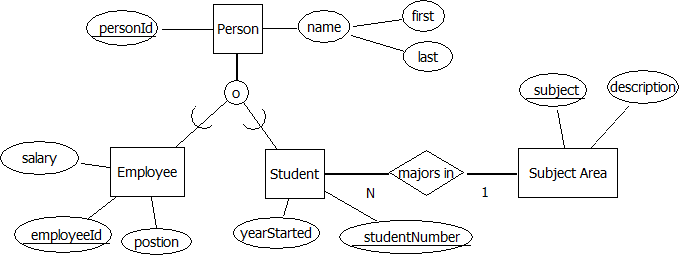APPENDIX B
B.4: Mapping Supertypes and Subtypes to a Relational Database
In chapter 8 we covered rules to be used when an ERD is mapped to a relational database. In this section we add rules for mapping supertypes and subtypes to relations. There are three basic options a designer considers when mapping these structures to a database:
-
-
- Create a relation for each entity type in the hierarchy.
- Create relations for only the bottom-most entity types.
- Create one relation to represent the whole hierarchy.
-
We use two examples to exhibit the mapping options; one where total participation is specified for the supertype and the other where participation is optional.
The previous library model is modified to show that an item can be out on loan to a member, and that one of the subtypes, video, is produced by a producer:

A university model where a person may be a student and/or an employee, and where students declare a major subject area:

Regardless of the option selected for hierarchies, the rules for mapping an ERD to a relational database discussed previously (Chapter 8) still apply. We must apply rules regarding relationships and attributes consistently. For example, if any entity type in a hierarchy is involved in a one-to-many relationship, we must ensure the proper use of foreign keys.

